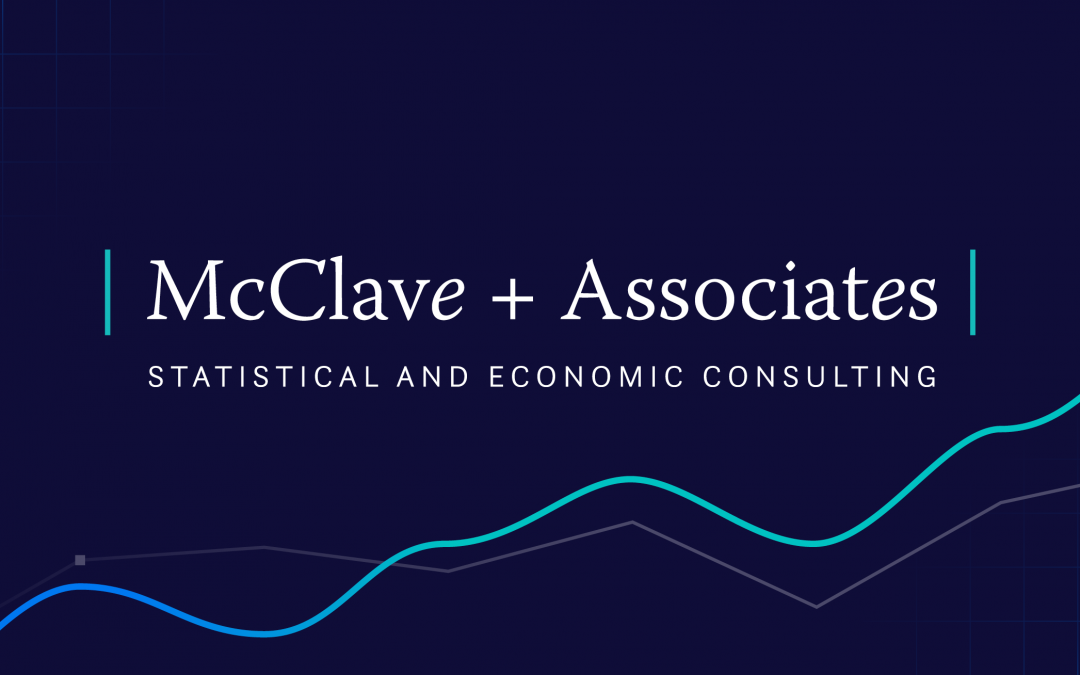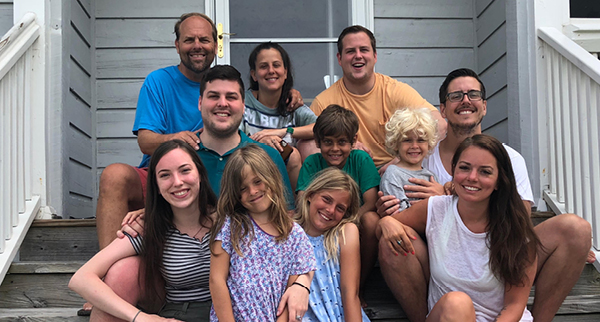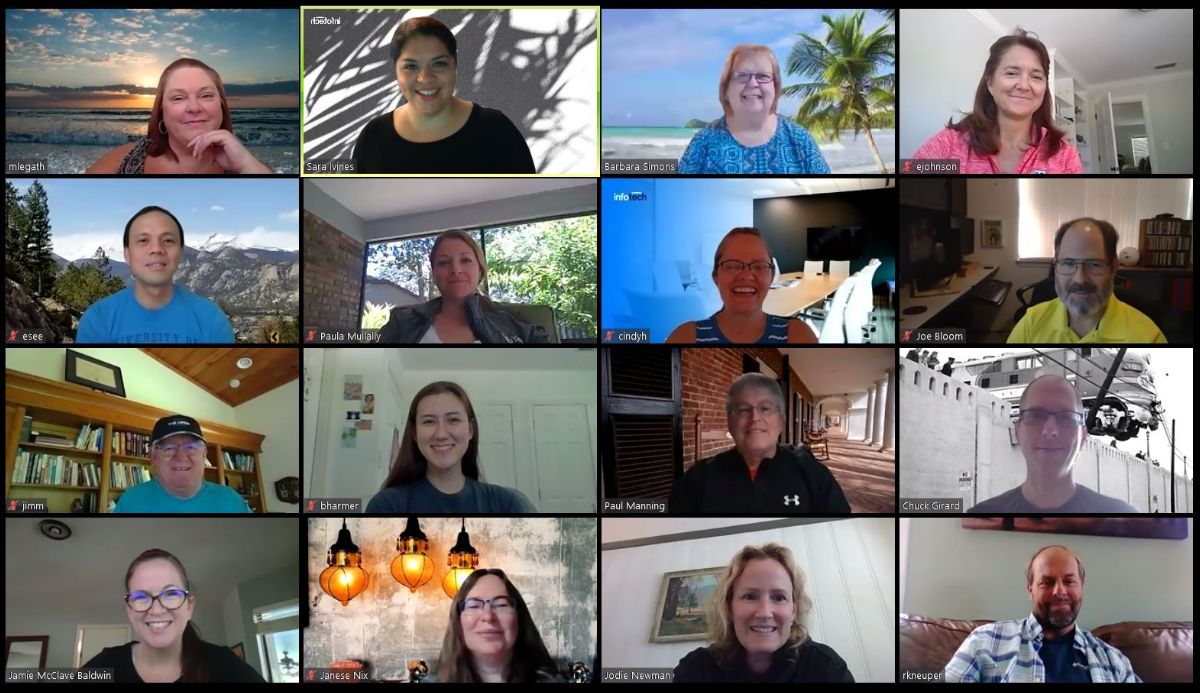
by info-services@infotechinc.com | Dec 10, 2020 | Blog
Defendants are defendants, but plaintiffs can wear many hats — direct class plaintiff, indirect class plaintiff, opt-out, end-payor plaintiffs — each presenting their own version of their litigation story. In our practice, the Infotech Consulting team has seen a growing number of indirect class action cases, despite the complicated legal precedent they face.
Part and parcel of navigating this complicated legal landscape in the indirect class actions is providing reliable and robust expert economic and econometric analyses in the face of discovery issues and limitations. While sales data for a direct purchaser — one who buys directly from an alleged antitrust conspirator — is typically produced in discovery, will a discovery production include complete purchase records of indirect plaintiffs who buy the product further down the sales chain? If transaction data for indirect purchasers is incomplete, does the production include a sufficient sample to support a reliable analysis? If there is a simultaneous direct class action, is there coordination among the parties to avoid inconsistencies in analyses?
Indirect Action: A Brief History
 Section 4 of the Clayton Act authorizes damages suits in federal court by “any person who shall be injured in his business or property by reason of anything forbidden in the antitrust laws.” (15 U.S.C. sec. 7; 15(a)). However, in the seminal Illinois Brick case, the US Supreme Court essentially limited recovery to those plaintiffs who purchased directly from the defendants. (Illinois Brick Co. v. Illinois, 431 US 720 (1977)).
Section 4 of the Clayton Act authorizes damages suits in federal court by “any person who shall be injured in his business or property by reason of anything forbidden in the antitrust laws.” (15 U.S.C. sec. 7; 15(a)). However, in the seminal Illinois Brick case, the US Supreme Court essentially limited recovery to those plaintiffs who purchased directly from the defendants. (Illinois Brick Co. v. Illinois, 431 US 720 (1977)).
Embedded in matters related to judicial economy and concerns regarding duplicative recovery, the Court held that indirect purchasers are barred from pursuing damages under federal antitrust law. This landmark decision shut the door on potentially injured purchasers while allowing direct purchasers to recover the full amount of overcharges even if they passed some or all of those overcharges on to their customers. So how do these plaintiffs recover damages in federal court?
Thanks to Illinois Brick repealer statutes, many states have secured standing for indirect purchasers. These states, numbering around 30 including the District of Columbia, have enacted legislation that permits indirect purchasers to initiate antitrust actions in state or federal court under state antitrust laws.
The Supreme Court most recently weighed in on the indirect purchaser issue in its 2019 decision in Apple v. Pepper, in which the Court eschewed overturning Illinois Brick but arguably expanded the definition of “direct purchasers” permitted to pursue claims under federal antitrust laws. By defining consumers who purchased third party apps through Apple as direct purchasers, the Court may have created an opportunity for purchasers in a two-sided market to circumvent Illinois Brick in certain situations. A whole new category of “direct purchasers” may have been created: those consumers who make purchases using platform services such as ticket brokers or online platform sellers. Particularly noteworthy in cases where platform services are involved, the Court specifically ruled that the form of the upstream arrangement between the manufacturer and the allegedly “monopolistic retailer” — e.g., who sets the retail price — is not relevant to the direct purchaser inquiry.
Building a Robust Econometric Analysis for Indirects
Since a robust empirical analysis is critical to certifying a class of indirect purchasers and ultimately demonstrating impact and damages, data is key. Defendants’ sales data typically is used to estimate the overcharges incurred by direct purchasers, a critical first step in the indirect plaintiffs’ impact and damages analyses. But that data rarely includes sufficient (or any) indirect purchaser end-user information: once Defendant sells Widget X to its distributor (the direct purchaser), Defendant has no record of Widget X’s sale to our Indirect Plaintiff.
Further complicating the matter, there may be multiple layers of indirect purchasers in an industry: distributors, retailers, consumers, and, in the increasingly common pharmaceutical cases, third party payors (insurance companies). Securing transaction data that includes records of sales between the direct purchasers and indirect plaintiffs is essential to an empirical analysis of the indirects’ claims, but our experience has been that obtaining all records of all indirect purchases is uncommon.
In that event, a statistically valid sample of direct-to-indirect records can form the basis for the econometric analysis, bolstered by documentary and other evidence. Identification of large indirect purchasers who maintain their own complete transaction records also may yield supporting data for the expert analysis.
 The more-data-is-better rule of thumb puts indirect plaintiffs in a better position to defeat challenges such as ascertainability, particularly with a robust empirical analysis supported by ample documentary evidence of pass through and widespread impact. Access to and the ability to fully understand the purchase transactions of the named indirect plaintiffs can help to avoid additional roadblocks to class certification.
The more-data-is-better rule of thumb puts indirect plaintiffs in a better position to defeat challenges such as ascertainability, particularly with a robust empirical analysis supported by ample documentary evidence of pass through and widespread impact. Access to and the ability to fully understand the purchase transactions of the named indirect plaintiffs can help to avoid additional roadblocks to class certification.
Regardless of the source of the data, early access to this data, and leaving sufficient time for follow-up with the producing parties and analysis is critical. Often, coordination with direct plaintiffs in parallel litigation can present opportunities to share data, data processing and even analysis. Since, again, the first step of the indirect plaintiff’s expert analysis often is the estimation of an overcharge to the direct purchasers, some coordination with the direct plaintiff’s expert to avoid unnecessary inconsistencies can prevent experts being pitted against each other.
While the production of data from defendants, from direct purchasers, and from indirect plaintiffs themselves and the coordination of various expert analyses can seem daunting, the importance of strategic and timely planning in an indirect case is elevated given the complicated and multi pronged analysis necessary to support class certification.

by info-services@infotechinc.com | Nov 23, 2020 | Blog

Brooke Harmer

Michael Smith
Recently, we both had the pleasure of attending AAI’s 14th Annual Private Antitrust Enforcement Conference. As young professionals who entered a field heavily focused on antitrust litigation earlier this year, our first AAI conference was a very informative experience. Despite this event transitioning online due to the COVID-19 pandemic, it truly seemed like the show carried on without missing a beat, and the communal feel surrounding this conference was undeterred by this transition.
This conference had a clear emphasis on diversity in the workplace and the strides we can take to achieve a representative workforce. An example that was used was “The Intel Rule,” which refers to Intel’s commitment to only work with outside counsel having at least 21% of their U.S. equity partners as women and at least 10% of their equity partners as underrepresented minorities. Intel believes if they “want to shape the future of technology, [their] workforce must be representative of that future.” This concept is applicable to any industry, including our own, in that if we are going to solve complex problems, we need diverse perspectives. By having a more diverse workforce, we are also able to look at our cases in different lights to find more creative solutions and better represent the people who our cases affect.
In the session titled “Leading Voices in Private Enforcement: Insights on Bringing and Litigating Successful Antitrust Cases,” which was moderated by Judith Zahid with panelists Dena Sharp, Eric Cramer, Dan Gustafson, and Kellie Lerner, the discussion on what makes a good expert was also enlightening and especially relevant to us at Infotech. As an expert, it is essential to be able to explain complex topics in a way that is simple to understand. This concept has been reflected at every level of our team through all phases of our projects. Each person on our team has specialized skills, so to be able to make a complicated topic understandable for every person on the team ensures that a jury will likely also be able to follow our logic. Additionally, good experts always prioritize honesty. This is a core Infotech Consulting value, and it comes naturally for us. We represent both plaintiffs and defendants, allowing the data to tell its truth, and we choose to work on cases in which we honor that truth. For this reason, we select our cases just as much as they select us.
Within the same session, there was a segment discussing advice for up and coming associates. Although we are not associates at a law firm, much of this advice was still very relevant to us as recent hires. When starting out in a new field full of so many complex and fascinating topics, it is easy to get intimidated by how much you may not know. However, the antidote to this intimidation is the privilege of being able to surround ourselves with a supportive team that gives us confidence. During the discussion, the following idea was raised: “ When working with a new associate, start with the idea that this is the next star; if you have hired them, you must already believe they can be.” Another related concept was stated plain and simply: “It is okay to lose. It is okay to make mistakes.” These are sentiments that the Infotech Consulting team strongly echoes, and it has been clearly showcased in the way we have been treated in our first few months on the job. Although we can only hope to one day reach star status, being able to immerse ourselves in an uplifting environment makes it even easier to find engagement with and passion for our work.
Speaking of passion, this conference clearly had a lot of it. It is evident that the AAI community has a purpose far greater than itself: promoting the well-being of fair, competitive business practices. It is refreshing (to say the least) to be able to work in a field in which we can positively affect social outcomes through our efforts, and it makes waking up in the morning all the more motivating. The sense of camaraderie surrounding this conference in support of the greater good really affirmed to us a sense of belonging.
The communal feel of the AAI extends beyond the boundaries of work. Some of the most memorable moments of the conference came from honoring the life of Hollis Salzman. Although we did not have the pleasure of knowing Hollis, it is evident that she left a positive impact on so many people, including our colleagues at Infotech Consulting who speak so highly of her. If we left the 14th Annual Private Antitrust Enforcement Conference knowing one thing was certain, it was that this impact will surely carry on for many years to come.

by Rob Kneuper | Sep 28, 2020 | Blog
We are now in the midst of a prolonged pandemic with no end in sight. Not only has this pandemic led to a deep economic recession, but it is dramatically changing the economic landscape. As an economist, I foresee major transformations of business models in various industries because of COVID-19. A key reason for this is consumers and businesses have learned how to operate effectively amidst a pandemic and that learning will carry over even once COVID-19 ends. Indeed, despite the challenging economic times we are living in, the U.S. economy has shown amazing resilience as businesses have adapted to changing conditions and people have learned to work online, educate online, shop online, be entertained online and socialize online.
In this article, I discuss five industries where I expect to see rather dramatic changes in business models going forward. While these industries are some of the hardest hit by the pandemic, they also present the most exciting entrepreneurial opportunities since there is a great deal of uncertainty regarding the longer-term impact of the COVID-19 recession in these industries.
1. Travel and Hospitality – One of the hardest hit sectors by COVID-19 involves travel and hospitality. Airlines have experienced a dramatic reduction in passenger traffic and have been forced to reduce the number of flights while laying off numerous employees. Hotels have experienced unusually low occupancy rates, correspondingly low revenues and have downsized their workforce. Resort destinations like Las Vegas, Orlando and numerous beach destinations have experienced dramatic declines in tourist traffic as Americans have substantially reduced their travel. And the cruise line industry has simply been decimated by COVID-19. Improved safety measures have helped the travel and hospitality industry and will need to stay in place as Americans gradually become comfortable renewing their historical travel patterns.
Indeed, the stock prices for large hotel chains such as Hilton and Marriot have recovered a significant part of their price erosion in recent months. But the impact on this industry is likely to extend well beyond the end of this COVID-19 recession in part because of the length of this pandemic and the potential for other future pandemics and other potential adverse events. There is no doubt this will force accelerated consolidation in the various travel and hospitality business sectors, which will lead to greater dominance by the market leaders such as the major hotel chains and larger airlines. But the interesting economic question is what other winners will rise from the ashes?
Who Will Rise Above?
Online travel planning is obviously a key player which will continue to displace travel agencies. But I also predict that the movement towards non-hotel lodging, such as Airbnb and VRBO, will accelerate. No doubt this is a trend that has already been in the works – it has been estimated that Airbnb’s market capitalization is greater than the largest worldwide hotel chain, Marriott International. But I suggest this shift will accelerate as people shy away from the large crowds that assemble at hotels in favor of smaller more intimate alternatives. Similarly, I suggest that there will be a sustained drop in travel involving crowds via planes, trains and buses, and a corresponding increase in travel via automobiles. We will see how it all plays out but COVID-19 will undoubtedly lead to major changes in the travel and hospitality industry!
2. Sports and Entertainment – Perhaps no industry has been more impacted by the pandemic than sports and entertainment. Movie theaters have been closed for extended periods of time. Concert venues are empty. Major sports are slowly restarting but without fans (or with very little) in attendance at local stadiums. Meanwhile, the movement toward at-home and online entertainment is accelerating. While it is difficult to predict what will happen after COVID-19 passes, certain business models are clearly under transformation. Most notably, the traditional Hollywood business model which has historically heavily relied on box office sales to support movies will need to be altered. At home-streaming has gradually been replacing box office visits as the movie theater is being replaced by the home theatre – COVID-19 will only serve to accelerate this shift.
Football vs Golf
The days of movie theatres are likely to be gone, or at least substantially diminished in their importance, but the outcome with respect to sports is trickier – in part because of the great enthusiasm that Americans have for team sports such as football, basketball and baseball. These sports are returning but, without large crowds in attendance, they may lose their luster. Indeed, the Los Angeles area just opened the NFL’s latest state-of-the art football stadium which was built for a whopping $5 billion and hosts both the Rams and the Chargers — yet for the moment that stadium sits largely empty during game day! In contrast to team sports, COVID-19 has been more accommodating to sports such as golf, tennis and auto racing. In fact, golf ratings have reached all-time highs during this pandemic. Overall, while Americans’ passion for sports will no doubt remain high post COVID-19, the lingering effects of experiencing this pandemic may lead many to eschew attending crowded sporting events in favor of other forms of entertainment.
3. Apparel – Even prior to COVID-19, department stores and upscale clothing retailers were struggling amidst the expansion of clothing sales both online and at clothing discount chains. For example, e-commerce accounted for an estimated 20% of total fashion sales in 2018. However, unlike in other industry categories, online fashion sales are not increasing, but are declining because overall fashion sales (both in-store and online) have experienced a significant drop-off in demand during COVID-19. As a result, various department stores and clothing specialty retailers are struggling to weather the pandemic. JCPenney and Neiman Marcus have closed hundreds of stores and have declared bankruptcy. The same is true for national clothing store chains such as Brooks Brothers, Ann Taylor, Lane Bryant, J.Crew and Men’s Warehouse.
The Hidden Costs of Manufacturing Abroad
In the meantime, clothing manufacturers are being stuck with huge amounts of excess inventory, including fashion that is going out of season. All of this is leading to a potentially fundamental redesign of the traditional fashion model that currently involves manufacturing large amounts of supply abroad well in advance of demand. A continued expansion of e-commerce will no doubt be a key part of the changing business models, but the current oversupply will likely cause many fashion companies to rethink their approach to business – potentially shifting to alternatives such as just-in-time manufacturing. While it is supposedly much cheaper to manufacture clothes abroad, the pandemic is exposing the hidden cost of doing so. As a result, it is conceivable that some apparel manufacturing may relocate back to the U.S. Regardless, the traditional fashion business models will need to better match supply with demand in order to avoid future supply gluts such as this one.
4. Education – Across the U.S. and elsewhere, teachers and students at all levels (grade school to college) have been forced to create online learning environments. It has been estimated that over 1.2 billion students globally are now learning out of the classroom. This, in turn, is forcing our educational systems to confront a fundamental issue: online learning has potential advantages over in-person learning. This is not to say that you can replace the effectiveness that many of us experience by learning in-person. But online learning has been shown by some studies to increase retention rates, particularly for older students, such as teenagers and adults. Online learning can also be much more convenient and time efficient compared to in-person learning. This prolonged pandemic is now vastly expanding the online learning environment so the advantages and disadvantages of online learning will likely be exposed even further. Some observers are suggesting that what will likely emerge is a hybrid model that combines in-person and online learning. Regardless, this pandemic may well be the trigger that revolutionizes education for the future.
5. Real Estate – Real estate is another industry that is likely to be dramatically transformed as a result of COVID-19. While the recession has hurt the residential and commercial real estate markets in many geographic areas in the short-run, the more interesting economic question is what will happen after COVID-19 ends? I believe that COVID-19 will lead to major changes in the value of real estate properties – with some experiencing substantial appreciation while others experience substantial depreciation. One key learning from the current pandemic is that many businesses have been able to operate effectively with their employees working remotely. As a result, businesses post-pandemic will likely rethink their commercial real estate choices while employees rethink their residential real estate choices. After all, why do certain businesses need to carry high real estate costs when their employees can work as effectively in the comfort of their homes? And why do employees want to bother commuting into the office if they can work as effectively at home?
COVID-19 will also impact geographic locational choices, likely leading to an even more accelerated movement away from areas hit hardest by the pandemic, including dense urban living environments. Commercial real estate in certain key categories such as retail, hospitality and office may experience a sustained decline in values as a result of COVID-19. And residential real estate may again experience sizable appreciation as people place greater value on their homes because they are spending much more time there.
Another industry impacted by COVID-19 is the retail sector. For more on details, check out my previous blog post – The Changing Competitive Landscape Due to COVID-19: The Impact on the Retail Sector.

by Rob Kneuper | Sep 3, 2020 | Blog
The now prolonged COVID-19 pandemic is hitting the U.S. and global economy hard. U.S. GDP in the second quarter of this year fell a whopping 9.5%! And the unemployment rate remains above 10%, though it has improved in recent months. While the economy has recently been improving, the prospect of a prolonged pandemic raises serious economic concerns in the U.S. and around the world.
However, this pandemic also raises business opportunities as entrepreneurs attempt to anticipate the changing competitive landscape due to the new reality of living in a pandemic-prone economy. I have studied numerous industries for 30 years now and am fascinated as to how rapidly our free market economy adapts to economic challenges such as the current pandemic.
In this article, I focus on one of the business sectors which I have studied extensively, and which has been deeply impacted by the COVID recession: the retail sector. I discuss some of the current challenges but, more importantly, future business opportunities in this industry.
Pandemic Winners and Losers
The retail landscape has dramatically changed since I grew up in the 1970s. At that time, most retail shopping took place at local strip shopping centers with mom and pop retailers and large indoor shopping malls. But today, indoor shopping malls are dying in favor of outdoor lifestyle centers where you can shop, dine and be entertained. And while some mom and pop retailers have survived, the retail sector is largely dominated by large mass merchandisers (e.g., Walmart), big box retailers (e.g., Best Buy), clubs (e.g., Costco) and internet retailers (e.g., Amazon).
What can we expect to see in the retail sector amidst COVID-19 and other potential future pandemics? Well, the simple answer is “more of the same” only at an even more accelerated fashion. This is because those retailers who have best weathered the COVID recession are the same ones that have been gaining the most ground in recent decades.
One obvious beneficiary of the pandemic is e-commerce. In Q2 2020, Amazon’s revenue rose 40% over the same quarter last year and its net income doubled! Not surprisingly, Amazon’s stock price has increased by more than 50% since April.
Certain specialty e-commerce retailers have done even better than Amazon. For example, Wayfair’s stock price was under $30 in March and now it is over $300 – a greater than tenfold increase! Overstock has experienced a similarly dramatic increase in its stock price. And many other firms in the e-commerce sector have gained substantially as well including eBay and Chewy. This trend fares well not only for large e-commerce retailers but also for many smaller online retailers that, for example, make use of Amazon’s business model. Indeed, the new mom and pop business model in a pandemic-prone economy may well be made up largely of small specialized e-commerce retailers!
Another big retail beneficiary from the pandemic are the mass merchandisers and club stores. In large part due to their size and breadth of product offering, Walmart and Target stores were able to stay open during the pandemic, allowing them to gain sales from other retailers who were forced to close or shift to curbside only sales. Both Walmart and Target also substantially benefited from their substantial online presence, which facilitated the ability of shoppers to order their products online and pick them up at the store. Similarly, Costco and Sam’s Club have also gained ground during this pandemic. Clearly, living in a pandemic-prone economy will only strengthen the retail positions of Walmart, Target, and the club stores.
Many big box retailers have also done well amidst the pandemic. For example, Best Buy’s stock recently hit an all-time high despite the fact that it shifted to only curbside offerings in the spring. This is because Best Buy was able to keep sales relatively high (in large part due to people ordering online and picking up at the store) while cutting costs. Other big box retailers have also fared well, particularly Home Depot and Lowes, as many people have shifted their focus to home projects amidst the pandemic. And even the office superstores (e.g., Staples) and pet superstores (e.g., PetSmart) are sustaining themselves through the pandemic.
So, all of this begs the question, if the mass merchandisers, big box retailers, clubs and e-commerce retailers are doing well, which retailers are being hurt by the pandemic? Well, the answer is, pretty much everyone else. You just need to take a look at the relatively empty large shopping malls and strip centers and there is your answer. Department stores like JC Penney and Neiman Marcus have closed hundreds of stores and have declared bankruptcy. The same is true for national clothing store chains such as Brooks Brothers, Ann Taylor, Lane Bryant, J.Crew and Men’s Warehouse. And many other national and regional retailers that are typically located in large shopping malls and strip centers have also followed suit including Pier 1 Imports, Modell’s and GNC.
In addition, the available information indicates the smaller mom and pop retailers are struggling with reduced sales, though these smaller businesses have shown amazing resiliency and have adapted to the economic challenges of the pandemic. Many of those smaller retailers that have survived are doing so by offering curbside-service, reduced business hours and expansion of their online offerings.
The Future of Retail in a Pandemic Prone Economy
What does this tell us about the future of retail? It tells us several things:
- First, and most obviously, the movement towards e-commerce retail will accelerate including not only Amazon but also other online retailers such as Walmart and specialty online retailers.
- Second, large multi-product retailers such as Amazon, Walmart and Target will continue to dominate the retail landscape for the foreseeable future.
- Third, the movement towards retailers with a combination of strong brick & mortar and e-commerce operations will accelerate.
- Fourth, both small mom and pop specialty retailers and specialty retail chains that tend to locate in strip malls and large shopping malls will need to significantly change their business models. This the area of the greatest challenge but also with the greatest entrepreneurial opportunities.
Here are some of the changes that will need to be made for these latter businesses to continue to compete:
- E-Commerce – Most obviously, specialty brick & mortar retailers will need to expand their presence in e-commerce. This will be particularly challenging but necessary for smaller mom and pop retailers who will need to expand the prevalence of online order and curbside pickup in a pandemic-prone economy. This suggests an expansion of e-commerce platforms that will facilitate the ability of online retailer ordering and pickup (or delivery) for small businesses.
- Space – Specialty retailers have historically operated in relatively small retail spaces (e.g., 2000 square feet) with narrow aisles and limited outdoor space. These retailers will need to shift to larger footprints, including more outdoor space, to better accommodate pandemic spacing requirements and curbside pickup services.
- Prices – Greater spacing will likely translate into higher prices which will in turn alter the attractiveness of retail options for consumers. Specialty retailers will need to revisit their pricing strategies and focus on products that will remain attractive to customers at heightened price levels, particularly in comparison with mass merchandisers and internet retailers. Consumers may be willing to pay a heighted price premium for a prom dress or pair of Ray-Ban sunglasses, but much less so for a best-selling book or a pair of tennis shoes. [Note: bookstores and shoe retailers have been particularly hard hit by the pandemic.]
- Selection – Specialty retailers have typically focused on a narrow selection of products and services but the shift towards larger space environments is likely to be also associated with combining multiple products and services under one roof. Some larger retailers already include smaller retailers within their footprint (e.g., Walmart). This trend towards combined product and service retail operations under one roof will likely expand in a pandemic prone economy.
Final Thoughts
Overall, the retail landscape will go through significant economic changes as we move forward amidst COVID-19. And, while the future is challenging, particularly for specialty retailers and mom and pop operations, there are great business opportunities for those retailers who can weather the pandemic storm and adapt to the new reality of conducting business in a pandemic-prone economy!

by info-services@infotechinc.com | Aug 24, 2020 | Blog
 “Oh, my first impression was that everybody was having way too much fun.”
“Oh, my first impression was that everybody was having way too much fun.”
About three years ago, Rob Kneuper joined Infotech Consulting as an economic expert.
“In my years of working in large consulting firms, we would joke around a bit, but for the most part it was very serious – there were many millions of dollars on the line. There was a sense of intense focus that I was used to. So I thought there’s way too much laughing going on here, this is serious analytical work. I had to get used to that to relax and have fun.”
Even as a remote employee, the energy was contagious.
“Between Jim [McClave] and Jamie [McClave Baldwin], the leadership is amazing, just the vision that they have and the compassion. I tell people that Jamie’s the first female boss I’ve ever had and also the best boss I’ve ever had,” Rob chuckles.
Behind his ocean-themed Zoom background a child laughs and a dog’s paws skitter across the floor. For most people, this is a new normal. For Rob, it’s been normal for a while.
Rob has always worked remotely for Infotech Consulting from his home in Charleston, SC. With four children still at home and four others already gone, his career of expert consulting has been but one of many exciting adventures in his life.
The dog pops into view on screen – an 80 pound chocolate labrador retriever named Charlie, who is, as Rob puts it, “a very good boy.” One of the kids waves at the webcam and retreats to the living room.
“They’re doing electronics right now – TikTok or something,” Rob says. “They keep me on my toes. Energy is the biggest challenge, because they have it and I usually don’t by the end of the day.”
 Even so, being with his family is the highlight of his day, he says, and bike rides and beach afternoons together are how he spends most of his down time – but not all of it.
Even so, being with his family is the highlight of his day, he says, and bike rides and beach afternoons together are how he spends most of his down time – but not all of it.
“I recently bought what I call my Midlife Crisis Mobile, which is a BMW convertible,” he says. “When I need to escape from my children, or after a long day, I usually just go driving off in my BMW convertible and pretend that all of my responsibilities don’t exist for a while.”
Economic expert consulting is hard work. Part brainstorming, part reviewing information, part creative problem solving and part client interaction, it’s a recipe that looks different every day for a job that is never dull.
“It’s mostly a lot of geeky analytical stuff,” Rob says. “We don’t actually go to court very often.”
But when he does have the opportunity to testify in court, Rob says the experience is very dynamic.
“You don’t know where it’s going to go and you just have to have a deep confidence that wherever it goes, you’ll be able to deal with it,” he says.
Building that confidence is no easy feat. The ability to feel prepared on the stand primarily stems from the intensive research done by the consulting team, leaving no path untraveled and no stone unturned, but there’s an inner certainty that must be strengthened as well. Rob has found that one of his personal interests plays a role in this self-assurance.
“I’m fascinated by psychology, particularly dream therapy. I am not infrequently interpreting the direction of my dreams, which are fascinating. So from a dream therapy point of view, dreams help you become more conscious of the things you’re not aware of,” he says.
“I grew up as an athlete and my dad was a pro baseball player and so there was always a lot of performance anxiety and this one dream is helping to confirm that I’m beyond that, you know, not feeling the anxiety so much as the ability to adapt and be flexible.”
 He thinks about the next question for a minute before answering: What’s his favorite thing about economics? Check out his latest article on the plight of small businesses in the COVID-19 economy.
He thinks about the next question for a minute before answering: What’s his favorite thing about economics? Check out his latest article on the plight of small businesses in the COVID-19 economy.
“Right now, there’s this kind of business economics that I do feel pretty passionate about. I think about how we are going to adapt economically to what you might call a pandemic-prone economy going forward.”
Business models will need to change and become more flexible, he says. They will have to find ways to facilitate the ability to work remotely, but at the same time help people to develop relationships.
“One of the things we get out of work is being productive, but we also get a lot out of the relationships and friendships that we build,” Rob explains. “I mean, we work at Infotech because we feel satisfied in our work, but also because we really enjoy the people we’re working with. And I have to say, having worked for a number of different firms, it’s very rare that you have that kind of enthusiasm that people have here at Infotech. It’s a terrific atmosphere.”

by info-services@infotechinc.com | Aug 20, 2020 | Blog
 Ask anyone who knows me, and they will tell you that I have always had a plan. I recently graduated from the University of Central Florida with a bachelor’s degree in Statistics. I entered the working world with a sense of optimism and options for my future. I was fortunate to have been able to create a career around a subject I am passionate about. Acquiring an understanding of foundational statistical theory and possessing an entry level amount of technical ability opened the door for me to become one of four consulting interns for Infotech Consulting during the summer of 2020. With every plan, there are variables beyond one’s control. With that notion in mind, I learned a great deal during my internship.
Ask anyone who knows me, and they will tell you that I have always had a plan. I recently graduated from the University of Central Florida with a bachelor’s degree in Statistics. I entered the working world with a sense of optimism and options for my future. I was fortunate to have been able to create a career around a subject I am passionate about. Acquiring an understanding of foundational statistical theory and possessing an entry level amount of technical ability opened the door for me to become one of four consulting interns for Infotech Consulting during the summer of 2020. With every plan, there are variables beyond one’s control. With that notion in mind, I learned a great deal during my internship.
 Imagine learning a subject in depth for years to then find out you were told only half the story. That’s a realization I came to after focusing on the theoretical side of statistics for most of my college experience. In a classical learning environment, you are provided structured problems with unambiguous solutions. In a perfect world, you would have all the information you need at your disposal to solve problems with statistics. Unfortunately, the real world is filled with complex, messy, ambiguous, and sometimes fraudulent information.
Imagine learning a subject in depth for years to then find out you were told only half the story. That’s a realization I came to after focusing on the theoretical side of statistics for most of my college experience. In a classical learning environment, you are provided structured problems with unambiguous solutions. In a perfect world, you would have all the information you need at your disposal to solve problems with statistics. Unfortunately, the real world is filled with complex, messy, ambiguous, and sometimes fraudulent information.
Consulting work is a fast-paced environment that requires constant adaptation. A normal week may involve working with multiple teams on various cases that are completely unrelated. Natural curiosity and a desire to learn for its own sake seemed to be a common characteristic shared by all the consultants. It became clear that understanding the justifications behind theoretical approaches was just as important as correctly applying the technical methodologies.
It was important to me to come into the internship with an open mind. I didn’t want to have expectations based on my own preconceived notions. In retrospect, this was a wise decision. There’s a misconception that learning ends when you complete your formal education, while in reality the importance of keeping an open mind and continuing to engage in learning is key to long-term success. When you enter a field with minimal experience, you are often faced with the challenge of not knowing the right questions to ask. As cliché as it sounds, you don’t know what you don’t know. Being aware of that and striving to never stop learning is imperative in consulting work.
 While often overlooked, I believe preparing for the internship ahead of time played a large role in my success. There is a big difference between academia and the real world. Technical skills in this line of work are critical. I put forward my best effort to ensure my skill set was at the expected level going into the position. Surprisingly, soft skills and the ability to interact and effectively communicate turned out to be just as valuable as any technical skill I learned. The importance of this was underscored when the COVID-19 pandemic hit, and the only option was to work remotely.
While often overlooked, I believe preparing for the internship ahead of time played a large role in my success. There is a big difference between academia and the real world. Technical skills in this line of work are critical. I put forward my best effort to ensure my skill set was at the expected level going into the position. Surprisingly, soft skills and the ability to interact and effectively communicate turned out to be just as valuable as any technical skill I learned. The importance of this was underscored when the COVID-19 pandemic hit, and the only option was to work remotely.
Even when you know what questions to ask after developing a strong foundation, the real way to differentiate yourself is knowing when to ask those questions.
My personal takeaway is that Infotech Consulting is using the strongest tools available to make sense of data in an imperfect world. The statistician George Box said, “Essentially all models are wrong, but some are useful.” Over the course of my internship, it was a humbling experience to get a glimpse into how much I still have to learn. Paired with a new-found appreciation of what it could mean for my future, it was an easy decision. It’s clear that the excitement and fulfillment of consulting work begins only after you’re able to see the big picture and that starts with understanding basic principles.

 Section 4 of the Clayton Act authorizes damages suits in federal court by “any person who shall be injured in his business or property by reason of anything forbidden in the antitrust laws.” (15 U.S.C. sec. 7; 15(a)). However, in the seminal Illinois Brick case, the US Supreme Court essentially limited recovery to those plaintiffs who purchased directly from the defendants. (Illinois Brick Co. v. Illinois, 431 US 720 (1977)).
Section 4 of the Clayton Act authorizes damages suits in federal court by “any person who shall be injured in his business or property by reason of anything forbidden in the antitrust laws.” (15 U.S.C. sec. 7; 15(a)). However, in the seminal Illinois Brick case, the US Supreme Court essentially limited recovery to those plaintiffs who purchased directly from the defendants. (Illinois Brick Co. v. Illinois, 431 US 720 (1977)).  The more-data-is-better rule of thumb puts indirect plaintiffs in a better position to defeat challenges such as ascertainability, particularly with a robust empirical analysis supported by ample documentary evidence of pass through and widespread impact. Access to and the ability to fully understand the purchase transactions of the named indirect plaintiffs can help to avoid additional roadblocks to class certification.
The more-data-is-better rule of thumb puts indirect plaintiffs in a better position to defeat challenges such as ascertainability, particularly with a robust empirical analysis supported by ample documentary evidence of pass through and widespread impact. Access to and the ability to fully understand the purchase transactions of the named indirect plaintiffs can help to avoid additional roadblocks to class certification. 



 “Oh, my first impression was that everybody was having way too much fun.”
“Oh, my first impression was that everybody was having way too much fun.”  Even so,
Even so,  He thinks about the next question for a minute before answering: What’s his favorite thing about economics?
He thinks about the next question for a minute before answering: What’s his favorite thing about economics?  Ask anyone who knows me, and they will tell you that I have always had a plan. I recently graduated from the
Ask anyone who knows me, and they will tell you that I have always had a plan. I recently graduated from the  Imagine learning a subject in depth for years to then find out you were told only half the story. That’s a realization I came to after focusing on the theoretical side of statistics for most of my college experience. In a classical learning environment, you are provided structured problems with unambiguous solutions. In a perfect world, you would have all the information you need at your disposal to solve problems with statistics. Unfortunately, the real world is filled with complex, messy, ambiguous, and sometimes fraudulent information.
Imagine learning a subject in depth for years to then find out you were told only half the story. That’s a realization I came to after focusing on the theoretical side of statistics for most of my college experience. In a classical learning environment, you are provided structured problems with unambiguous solutions. In a perfect world, you would have all the information you need at your disposal to solve problems with statistics. Unfortunately, the real world is filled with complex, messy, ambiguous, and sometimes fraudulent information.  While often overlooked, I believe preparing for the internship ahead of time played a large role in my success. There is a big difference between academia and the real world. Technical skills in this line of work are critical. I put forward my best effort to ensure my skill set was at the expected level going into the position. Surprisingly, soft skills and the ability to interact and effectively communicate turned out to be just as valuable as any technical skill I learned. The importance of this was underscored when the COVID-19 pandemic hit, and the only option was to work remotely.
While often overlooked, I believe preparing for the internship ahead of time played a large role in my success. There is a big difference between academia and the real world. Technical skills in this line of work are critical. I put forward my best effort to ensure my skill set was at the expected level going into the position. Surprisingly, soft skills and the ability to interact and effectively communicate turned out to be just as valuable as any technical skill I learned. The importance of this was underscored when the COVID-19 pandemic hit, and the only option was to work remotely.